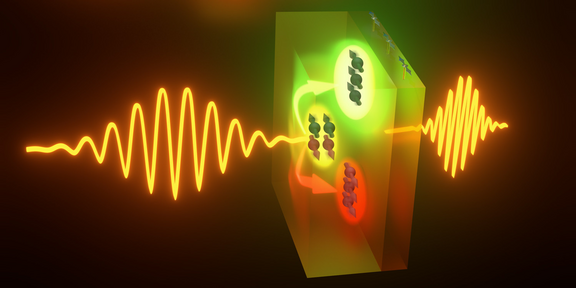Researchers Use Light to Read Magnetic Structures

Thanks to magnetic structures, a single hard drive can today store several million megabytes. But with data rates of only a few hundred megabytes per second, accessing this compressed information is still relatively slow. First experiments have already shown that fast electrical pulses could shorten the readout time from milliseconds and microseconds to just a few nanoseconds. Reading data with light would even be a thousand times faster than that! In a paper they published recently, the physicists from Dortmund and Dresden present an initial basis for this ultrafast reading of magnetic structures within picoseconds. They used extremely short and intense terahertz pulses generated by the “ELBE” radiation source at the HZDR to analyze the magnetization of wafer-thin material samples. The material comprised two layers, which were no more than three nanometers in “thickness” and as a result could be penetrated by part of the terahertz radiation. This partial transparency is a prerequisite for reading magnetization with light.
In the experiments, the terahertz flashes triggered a large number of light-matter interactions. In combination with other optical short pulse lasers, the team was able to show and decode very fast relativistic quantum effects in the wafer-thin layers. “Once they have penetrated the sample, the terahertz pulses acquire something called a ‘harmonic’, and it is precisely this that we can detect and which allows us to determine the magnetization of the lower material layer within picoseconds,” says Dr. Sergey Kovalev from TU Dortmund University, who led the experiments together with Dr. Ruslan Salikhov from the HZDR. The latest findings are the outcome of long-standing collaboration between the Institute of Ion Beam Physics and Materials Research at the HZDR and Professor Zhe Wang’s research group at the Department of Physics of TU Dortmund University. Some of the experiments were conducted in Dortmund.
Although there is still a very long way to go from this successful basic research to an ultrafast hard drive, researchers are already exploring how terahertz radiation could be used not only to read but also to write magnetically stored data. This necessitates far more compact sources for short terahertz pulses and high-performance sensors for analyzing them.

